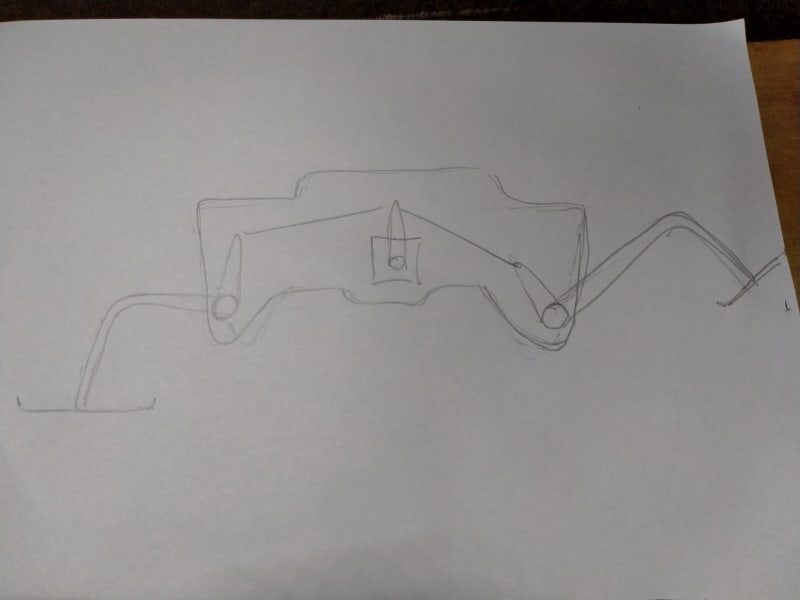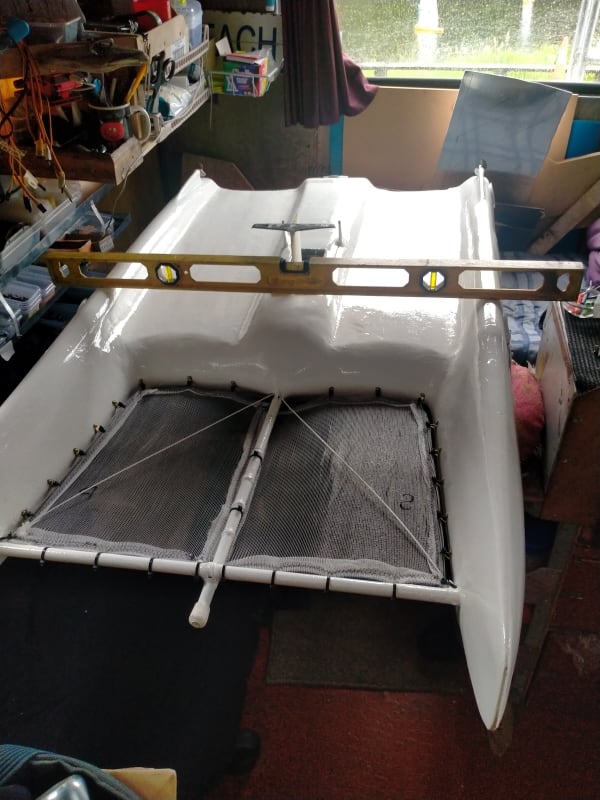Testpilot__
Marine/Ocean
Hi. I've just joined and, well,the technology with foiling yachts is right on the edge of developing technologies, I'm a commercial pilot and designer of an offshore foiling catamaran. This forum will have the mindset for experimental, and concepts, so any interested feedback is most welcome.
I've built a small scale working prototype, but I'm pondering the larger scale design now. The sailing catamaran boat will be approximately 60', 25 ton. Thought I may consider the second prototype to be 1/2 scale. Just for practical construction reasons, proof of concept etc. The area I'm concentrating on at the moment is the canting foils deployment. Much like AC75 America cup boat has. However my design is not for racing, where hydraulic systems are probably stripped down after every race, but more long term offshore cruising. Tacks will be of long duration, and the load on the foil(s), 2 x on starboard, 2 x on port side, will be mainly a static load. (I've gone for a canting foil, as I'm trying to maximise the righting moment)... Set the foil position and crank on the sail power, plus twin prop thrust (electric) to help get to foil speed. Once the catamaran is foiling, the loads will reduce, though I think design parameters for around 20 ton load on the individual foil arm would be not out of the question.
I've been looking into hydraulic assist heavy duty steering box type of arrangement. I know they have a worm drive and I want zero backlash in the application. I'd like to turn a big wheel, and the pitman arm, connected to a tie rod to similar lever on the foil arm shaft, will, for example, raise the port rear foil and lower the rear starboard foil. And then there is a way to lock that position.
I thought an engineering forum might be helpful. So, I'll see if there's some helpful information out there? Thank you!
I've built a small scale working prototype, but I'm pondering the larger scale design now. The sailing catamaran boat will be approximately 60', 25 ton. Thought I may consider the second prototype to be 1/2 scale. Just for practical construction reasons, proof of concept etc. The area I'm concentrating on at the moment is the canting foils deployment. Much like AC75 America cup boat has. However my design is not for racing, where hydraulic systems are probably stripped down after every race, but more long term offshore cruising. Tacks will be of long duration, and the load on the foil(s), 2 x on starboard, 2 x on port side, will be mainly a static load. (I've gone for a canting foil, as I'm trying to maximise the righting moment)... Set the foil position and crank on the sail power, plus twin prop thrust (electric) to help get to foil speed. Once the catamaran is foiling, the loads will reduce, though I think design parameters for around 20 ton load on the individual foil arm would be not out of the question.
I've been looking into hydraulic assist heavy duty steering box type of arrangement. I know they have a worm drive and I want zero backlash in the application. I'd like to turn a big wheel, and the pitman arm, connected to a tie rod to similar lever on the foil arm shaft, will, for example, raise the port rear foil and lower the rear starboard foil. And then there is a way to lock that position.
I thought an engineering forum might be helpful. So, I'll see if there's some helpful information out there? Thank you!


